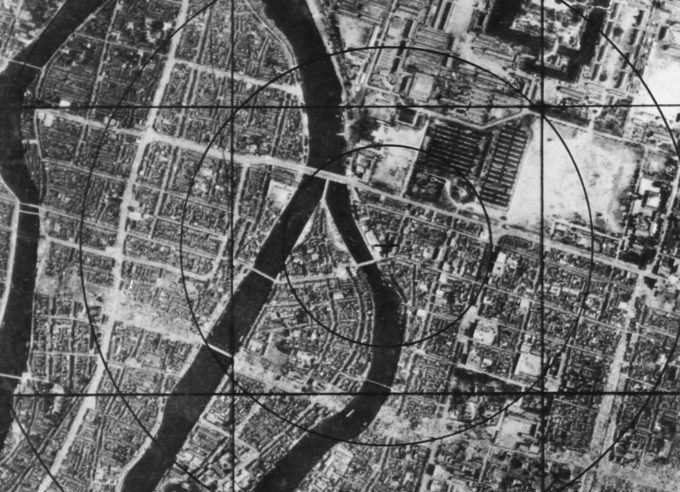
IMAGE/U.S. National Archives and Records Administration
On Monday August 6, 1945, the United States unleashed an atomic bomb on Hiroshima killing 140,000 people instantly. 70% of the city was destroyed. A few days later on August 9th, another atomic bomb was dropped on Nagasaki killing an estimated 70,000 people.[2] The Japanese government stated that the death toll was much higher than the American estimates, indicating that it was close to a half million. Many died not only because of lack of medical help, but also from radioactive rain. In the immediate aftermath, the incineration of mostly innocent civilians was buried in official government pronouncements about the victory of the bombings of both Hiroshima and Nagasaki. Violence rendered in military abstractions and patriotic platitudes is itself an act of violence. The visceral effect of violence brings to the surface what can only be considered intolerable, unthinkable, and never unknowable. Maybe such horror can only be possible in the language of journalism.
Within a short time after the dropping of the atom bombs on Hiroshima and Nagasaki, John Hersey wrote a devastating description of the misery and suffering caused by the bomb. Removing the bomb from abstract arguments endorsing matters of technique, efficiency, and national honor, Hersey first published in The New Yorker and later in a widely read book an exhausting and terrifying description of the bombs effects on the people of Hiroshima, portraying in detail the horror of the suffering caused by the bomb. There is one haunting passage that not only illustrates the horror of the pain and suffering, but also offers a powerful metaphor for the blindness that overtook both the victims and the perpetrators. He writes:
On his way back with the water, [Father Kleinsorge] got lost on a detour around a fallen tree, and as he looked for his way through the woods, he heard a voice ask from the underbrush, ‘Have you anything to drink?’ He saw a uniform. Thinking there was just one soldier, he approached with the water. When he had penetrated the bushes, he saw there were about twenty men, they were all in exactly the same nightmarish state: their faces were wholly burned, their eye sockets were hollow, the fluid from their melted eyes had run down their cheeks. Their mouths were mere swollen, pus-covered wounds, which they could not bear to stretch enough to admit the spout of the teapot.[3]
The nightmarish image of fallen soldiers staring with hollow sockets, eyes liquidated on cheeks and mouths swollen and pus-filled stands as a warning to those who would refuse blindly the moral witnessing necessary to keep alive for future generations the memory of the horror of nuclear weapons and the need to eliminate them. Hersey’s literal depiction of mass violence against civilians serves as a kind of mirrored doubling, referring at one level to nations blindly driven by militarism and hyper-nationalism and at another level the need to exorcise history which now functions as a curse.
Transcend for more
